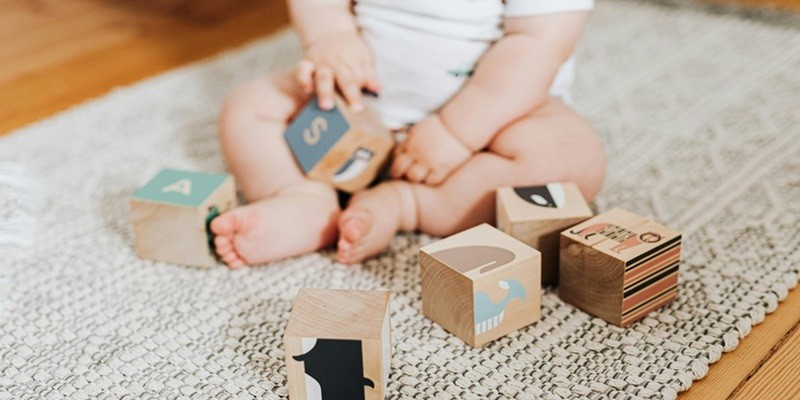One of the most exciting milestones as a parent is when your baby starts crawling. It’s a sign of their growing independence and mobility and opens up a whole new world of exploration for them. But as with any developmental milestone, every baby reaches it at their own pace. So, how do you know when your little one is ready to start crawling? Here, we will discuss the signs that indicate your baby is ready to start crawling and offer tips to help them along the way. So, witness your little one’s first steps toward independence and adventure!
The importance of tummy time
Tummy time plays a pivotal role in developing the muscles your baby will use for crawling. Placing your baby on their stomach on a safe, flat surface—like soft nursery room rugs —encourages them to lift their head, strengthening their neck, shoulder, and arm muscles. It’s these very muscles that are crucial for the crawling phase. Initiating tummy time early helps your baby become accustomed to the position and sets the foundation for the crawling milestone. Additionally, it’s a beautiful opportunity for interactive play that fosters bonding and development.
Mastering the mini push-ups
When your baby starts doing mini push-ups, it’s a sign they’re gearing up for crawling. This involves lying on their tummy and pushing up with their arms to lift their chest and head off the ground. It demonstrates their growing upper body strength and ability to use their arms for mobility. Observing your baby perform these mini push-ups frequently indicates that they build muscle strength and coordination for the crawling stage. Encourage this activity by engaging with your baby during tummy time and motivating them with toys or colorful objects placed just out of reach.
The art of rocking back and forth
When your baby begins to rock back and forth on their hands and knees, it’s a strong indicator that crawling is just around the corner. This rocking motion is crucial as it helps them develop balance and coordination, key components for crawling. Additionally, this rocking is a form of practice, enabling them to understand how to shift their weight and propel themselves forward or backward. Encouraging this behavior by placing toys around them can motivate your baby to start moving to crawling.
Showing interest in moving toward objects
As your baby becomes more aware of their surroundings, you might notice an increased interest in moving towards objects that catch their attention. This curiosity is a vital sign that your baby is ready to explore and may soon start crawling to reach toys or people they are fascinated by. Placing desirable objects beyond their reach can encourage this exploratory behavior, motivating them to attempt crawling to interact with their environment. This willingness to move towards interesting objects demonstrates cognitive and physical readiness for the crawling milestone.
Transitioning between sitting and lying down independently
Your baby’s ability to transition between sitting and lying alone is a significant sign that it’s gearing up to crawl. This skill demonstrates their developing muscle strength, coordination, and control, essential elements for crawling. As babies master this ability, they gain the confidence to explore and engage with their surroundings more actively. Encouraging your baby to practice these transitions during playtime can further enhance their motor skills, paving the way for a smooth transition into crawling.
The creeping phase
Before a baby masters crawling, they may enter the creeping phase, where they propel themselves around using their arms while their belly remains on the floor. This is often seen as a precursor to accurate crawling, where the baby’s coordination and muscle use are fine-tuned for the more complex movements required. Encourage your baby during this phase by providing plenty of space for them to explore and placing toys at varying distances to promote movement. This phase is critical for building the strength and coordination needed for traditional crawling, making it an exciting time of development to observe and support.
By staying attentive to these key indicators, you can better support your baby’s journey towards mobility. Remember, each baby’s timeline is unique; patience and encouragement are vital. Engage with your little one, offer ample practice opportunities, and you’ll cheer on their first crawls toward exploration and adventure.
Last Updated on January 15, 2025 by Marjorie R. Rogers, MA (English), Certified Consultant

